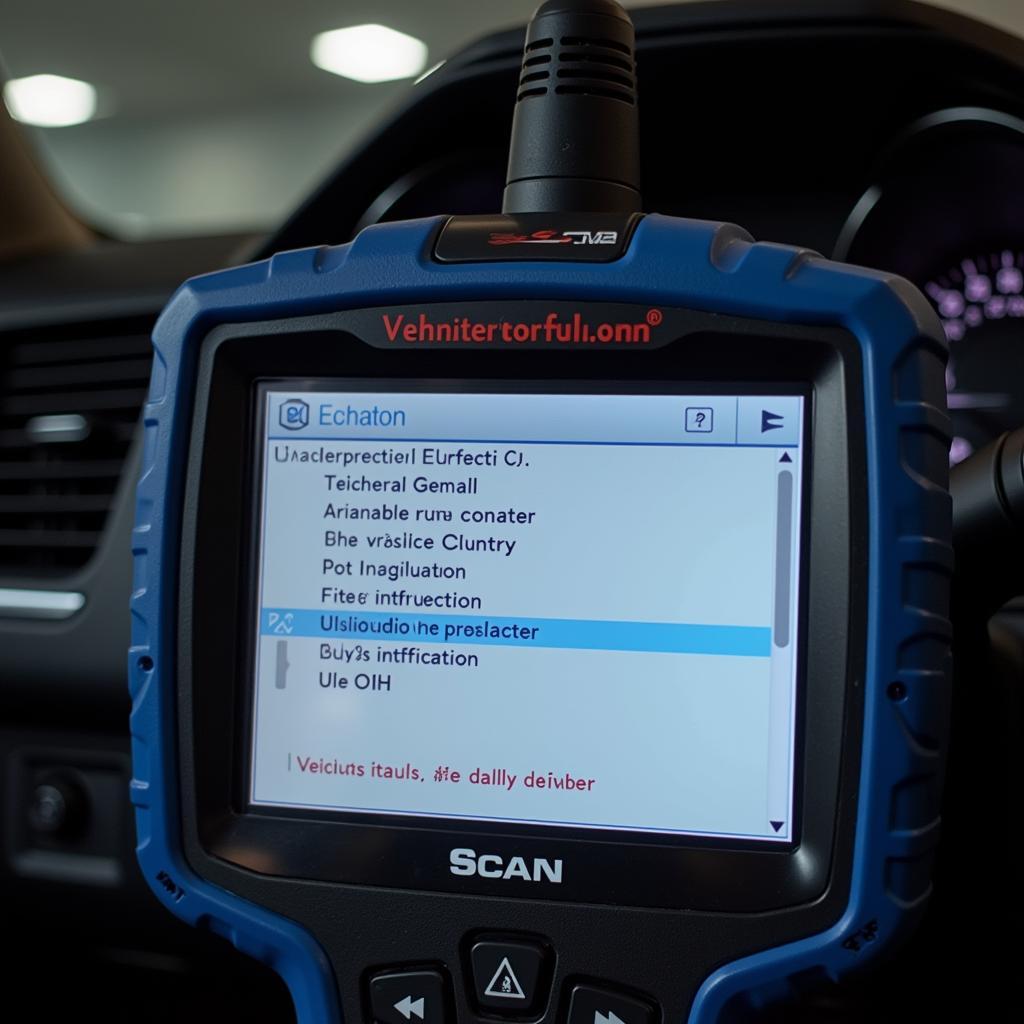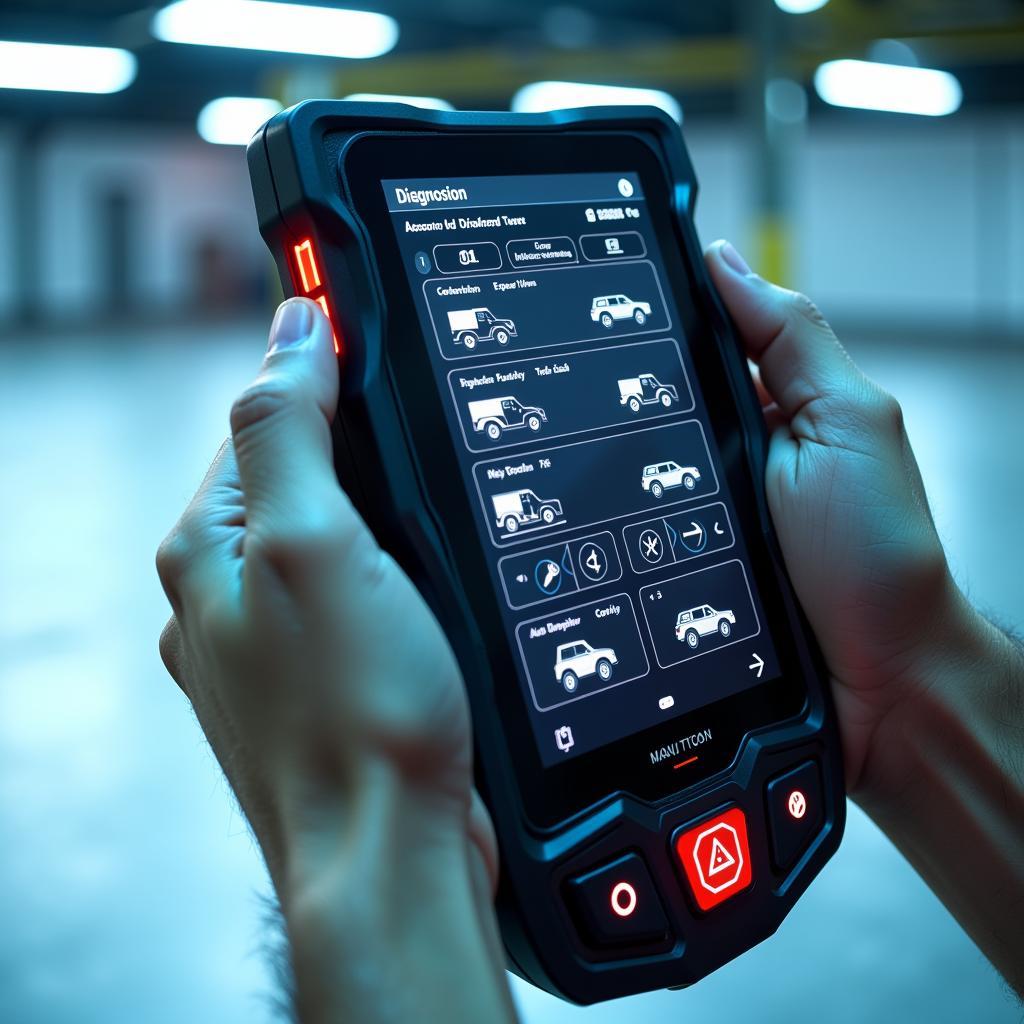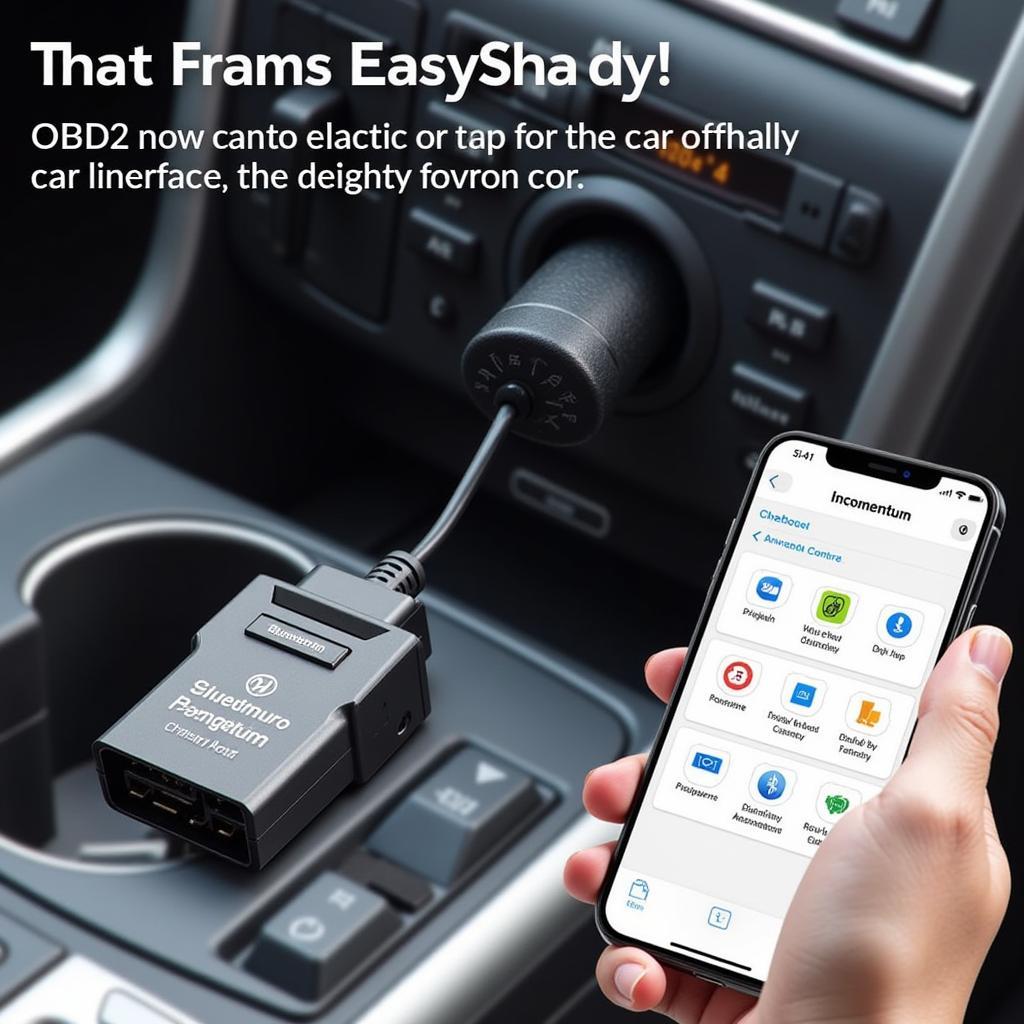Scan Tool Vehicle Definition is a crucial aspect of automotive diagnostics. It ensures your scan tool is communicating correctly with the vehicle’s computer system, allowing for accurate identification of issues and efficient repairs. A mismatch in vehicle definition can lead to misdiagnosis, wasted time, and unnecessary repairs. This article will delve into the importance of correct scan tool vehicle definition, troubleshooting common problems, and provide best practices for both car owners and professional technicians.
Similar to an active scan tool, understanding vehicle definition is essential for successful diagnostics. Many modern vehicles have complex computer systems that control various functions. The scan tool acts as a bridge between these systems and the technician, providing insights into the vehicle’s health. The scan tool vehicle definition acts as the language interpreter, ensuring the scan tool and the car’s computer speak the same dialect. Without the correct definition, the scan tool might misinterpret data, leading to incorrect trouble codes and potentially expensive repairs.
What is Scan Tool Vehicle Definition and Why is it Important?
Scan tool vehicle definition refers to the specific software within the scan tool that identifies the make, model, year, and sometimes even the engine type of a vehicle. This definition is essential for the scan tool to communicate effectively with the vehicle’s onboard diagnostic system (OBD). Without the correct definition, the scan tool may not be able to access all the necessary data, or worse, it might misinterpret the information.
What happens if the scan tool vehicle definition is incorrect? Imagine trying to read a book written in a language you don’t understand. Similarly, a scan tool with the wrong vehicle definition won’t be able to “understand” the data coming from the vehicle’s computer. This can lead to a variety of problems, from generic error codes to a complete inability to communicate.
 Scan Tool Showing Incorrect Vehicle Definition
Scan Tool Showing Incorrect Vehicle Definition
Common Problems with Scan Tool Vehicle Definition
One common issue is using an outdated scan tool. As vehicle technology evolves, so do the communication protocols and data structures. An older scan tool might not have the correct definition for newer vehicles, resulting in communication errors.
Another common problem is incorrect manual entry. Some scan tools require the user to manually input the vehicle information. Even a small typo can cause issues. For example, entering the wrong engine code can prevent the scan tool from accessing engine-specific data.
How to Troubleshoot Scan Tool Vehicle Definition Problems
If you’re experiencing problems with scan tool vehicle definition, there are a few steps you can take. First, ensure your scan tool software is up to date. Most reputable manufacturers provide regular updates that include new vehicle definitions.
Next, double-check the vehicle information you’ve entered. Verify the year, make, model, and engine code against the vehicle’s documentation. If you’re still having trouble, consult the scan tool’s user manual or contact the manufacturer’s technical support. They can often provide specific guidance based on your scan tool and the vehicle in question.
This process has similarities to using an options scanning tool where selecting the right options is critical. Ensuring the proper vehicle definition is selected is fundamental to effective diagnostics.
Best Practices for Using Scan Tool Vehicle Definition
Always keep your scan tool software updated. This ensures you have the latest vehicle definitions and access to the most accurate diagnostic information. Before connecting to a vehicle, double-check the vehicle information. A simple mistake can lead to wasted time and potential misdiagnosis.
“Accurate vehicle identification is the cornerstone of efficient diagnostics,” says automotive expert, Dr. Robert Johnson. “A correctly defined vehicle profile allows the scan tool to interpret data precisely, leading to faster and more reliable repairs.”
Choosing the Right Scan Tool for Your Needs
Selecting the right scan tool is crucial for both professionals and car owners. A pocket car scanner might suffice for basic code reading, but more advanced diagnostics often require a professional-grade tool with comprehensive vehicle definitions.
When choosing a scan tool, consider the types of vehicles you work with regularly. Ensure the scan tool you choose has regular updates and a wide range of supported vehicle definitions.
“Investing in a quality scan tool with reliable updates is crucial for any serious automotive enthusiast or professional,” adds Dr. Johnson. “The ability to accurately diagnose issues can save significant time and money in the long run.”
The Future of Scan Tool Vehicle Definition
With the ever-increasing complexity of vehicle electronics, the role of scan tool vehicle definition is becoming even more critical. Future scan tools might incorporate automatic vehicle identification, eliminating the need for manual entry and reducing the risk of errors. Cloud-based databases and wireless updates could streamline the process of keeping vehicle definitions up-to-date.
 Futuristic Scan Tool with Automatic Vehicle Identification
Futuristic Scan Tool with Automatic Vehicle Identification
Conclusion
Scan tool vehicle definition is a vital component of modern automotive diagnostics. Ensuring the correct definition is selected allows for accurate communication between the scan tool and the vehicle’s computer, leading to efficient and reliable repairs. By understanding the importance of scan tool vehicle definition, troubleshooting common problems, and following best practices, both car owners and technicians can improve their diagnostic capabilities and minimize the risk of misdiagnosis. For further assistance or inquiries regarding scan tool solutions, please don’t hesitate to contact us at ScanToolUS at +1 (641) 206-8880 or visit our office located at 1615 S Laramie Ave, Cicero, IL 60804, USA. We also offer various options including the OBDII & CAN Deluxe Scan Tool 60693 and you can find some of our offerings through Amazon auto scan tool.


